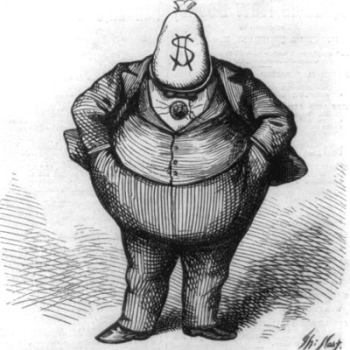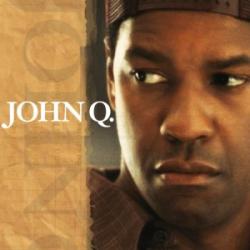"Income gap widens into a chasm" is the headline on AP writer Leigh Strope's article (via Cursor), which begins with this blunt summary:
Over two decades, the income gap has increased steadily between the richest Americans, who own homes and stocks, and those at the middle or bottom of the pay scale, whose paychecks buy less.
The growing disparity is even more pronounced in this recovering economy. Wages are stagnant, and the middle class is shouldering a larger tax burden. Prices for health care, housing, tuition, gas and food have soared.
The wealthiest 20 percent of households in 1973 accounted for 44 percent of total U.S. income, according to the Census Bureau. Their share jumped to 50 percent in 2002 while everyone else's fell. For the bottom fifth, the share dropped from 4.2 percent to 3.5 percent.
Strope writes that the facts suggest that John Edwards' "Two Americas" isn't merely a rhetorical device — it's an accurate description of the American economy:
Jobs and the economy top the list of voter concerns this election year. President George W. Bush touts a strong economy that is growing, but polls find that Americans have doubts. John Kerry seems to be trusted more on the economy, with Democrats talking regularly of "two Americas," divided between the rich and everyone else.
The argument has merit, some private economists say.
Strope's report goes on to quote two such economists: "Mark Zandi, chief economist at Economy.com" and "Sung Won Sohn, chief economist for Wells Fargo."
Those are familiar names to regular readers of the business pages of almost any American newspaper. The job description for a "chief economist" apparently involves getting quoted in the paper a lot. Zandi and Sohn are two of the go-to-guys for business reporters who want something more specific than "analysts say."
When business reporters write about a rise or fall in the stock indexes on a particular day they also try to report on what may have caused that change — "Dow falls on news from OPEC" or "Stocks rise after Fed announcement." The consensus conventional wisdom on such causes usually forms pretty quickly. But since this ain't Newtonian physics, cause and effect can't really be measured so easily. The assertions of cause and effect are therefore attributed to "analysts."
Two of the unofficial spokesmen for this unofficial group of analysts are Zandi and Sohn. Their role is to summarize the consensus view, to restate the conventional wisdom and allow it to be attributed to an authoritative source. They tell us what everybody knows.
That's what makes Strope's article interesting. She reports that, just as Edwards says, we have two Americas — one for the wealthy, and one for everybody else. Yet in support of this she doesn't cite any of the usual progressive suspects (like, say, the Center on Budget and Policy Priorities). She instead cites the arbiters of official consensus and conventional wisdom.
The reality of "two Americas" cannot be dismissed as partisan or "controversial." It's what everybody knows.
Wages are stagnant, and the middle class is shouldering a larger tax burden. Prices for health care, housing, tuition, gas and food have soared.
It's rare, in an election year, to see these evident facts reported as such. These facts are not flattering for the incumbent's political campaign and so many journalists seem to think that reporting them is to risk appearing one-sided. They seem to agree with The Daily Show's Rob Corddry that "the facts are biased against Bush." And so, to avoid bias, they avoid facts — or they couch fact as opinion (The Kerry campaign claims that wages are stagnant and the middle class is shouldering a larger tax burden …).
Kudos to Strope for providing at least one case where the "real" news doesn't sound so much like its parody on the "fake" news.












